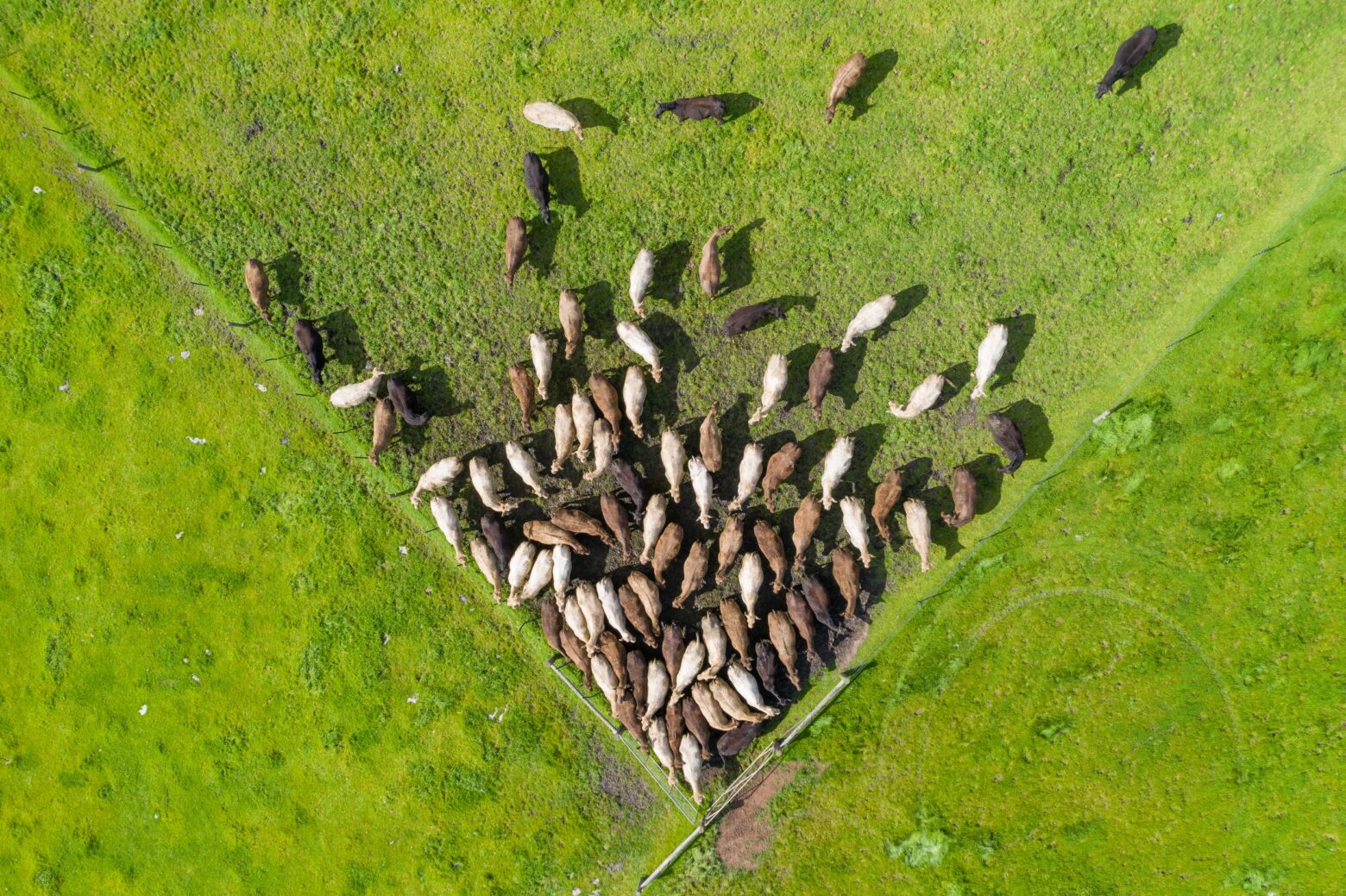Is Being Vegetarian Actually Good for the Environment?

These days, it’s hard not to open a magazine or turn on the TV without hearing about climate change. At The Paleo Diet®, the impact that food production has on carbon emissions is of utmost importance—particularly given the significant climatic changes that face humanity. The fact is, even if some of the causes of climate change are beyond our control, humanity should do everything it can to contribute to the solution, instead of the problem.
When it comes to food’s impact, many pundits speak with an authoritative tone demanding that plant-based diets are not only best for your health, but also better for the environment. This is true of the lay literature and also in published scientific journals. [1,2]
To the first point, we have written extensively on the topic of optimal nutrition, and we are very confident in the position that a Paleolithic diet is far better for human health than any diet that completely eliminates animal-sourced foods. (See also Nutritional Disasters Part 1, Part 2, Part 3 and Battle of the Proteins.)
However, the question of whether we should or need to remove animal foods from our diet and focus on eating plant-only diets for the betterment of the environment is up for debate and warrants scrutiny.
Livestock and climate change
In a 2017 position paper entitled “Livestock solutions for climate change” produced by The Food and Agriculture Organization of the United Nations (FAO), livestock supply chains accounted for 14.5 percent of global anthropogenic greenhouse gas emissions (GHGEs). About two-thirds of that total is attributed to cattle, primarily due to methane emissions resulting from rumen fermentation (the digestive process in ruminant animals such as cattle).
However, the most comprehensive beef cattle lifecycle assessment ever completed, conducted by the USDA’s Agricultural Research Service and The Beef Checkoff, found widely accepted measures related to beef cattle’s impact in the U.S. are often overestimated. [3]
This recent study, which included 2,200 cattle producers in seven regional production areas, found that beef production is responsible for only 3.7 percent of GHGEs in the U.S.—a number more than 2.5 times lower than the FAO global figures.
Practicing regenerative agriculture
It may be possible to reduce this carbon footprint even more.
The wide variation found in the carbon footprints among the different production systems indicates the potential for further improved sustainability, despite some of the differences being due to climate and soil factors beyond the control of the producers. These figures are also in line with data reported by the United States Environmental Protection Agency.
There are alternatives to how agriculture is practiced compared to most current standards. In fact, there are two main approaches to agriculture—non-regenerative agriculture and regenerative agriculture—and they can have very different impacts on the environment.
So, the question is, what would the carbon footprint then look like if regenerative agriculture were practiced? How we treat our soil can have a huge impact on climate change. Depending on whether soil is preserved or degraded, the consequences can be positive or negative.
Regenerative agriculture, at its core, has the intent of improving the health of soil or to restore degraded soil. This in turn enhances the quality of water, vegetation, and land-productivity and has the effect of sequestering carbon from the atmosphere. [4] Food production on a more local scale has been found to preserve soil and improve its quality while simultaneously reducing the use of fossil fuels.
Beneficial, and perhaps even necessary, to effective soil management are appropriate grazing practices that help regenerate soil function. [5] An important tenant of regenerative agriculture is that land should cycle between crops and animal grazing. Both are needed to keep the soil healthy. Regenerative farming systems have also been shown to decrease pests while increasing farmer profitability. [6]
Linking nutrient density and health to climate change
Researchers have recognized that considerations of the environmental impact of foods need to be linked to concerns about nutrient density and health. [7–9] After all, optimal nutrition is extremely important because there is a significant carbon footprint to being metabolically unhealthy and getting sick. [10–13]
Deciding what are the best foods to produce for human health, while minimizing the effect upon climate change, is not a straightforward question. And it’s made even more complicated by the fact that many of the largest food producers in the country have set practices that would take considerable time and resources to change. While we hope that they will give greater consideration to the environmental impact of their practices, we recognize this is not an overnight change nor an easy one for them to make.
The question remains, is being a vegetarian or a vegan better for the environment, or is following The Paleo Diet just as good? So long as a vegan/vegetarian diet is carefully planned to avoid common nutrient deficiencies, both diets, using locally produced foods from regenerative agriculture, can have a low carbon footprint. Of course, The Paleo Diet doesn’t have to be carefully planned to avoid nutrient deficiencies.
Thus, it comes down to how our food is produced. A compelling documentary called Kiss The Ground, argues how regenerative agriculture can literally save our planet. So, regardless of which foods you choose to eat, the important decision is to support regenerative agriculture.
References
[1] Fresán U, Sabaté J. Vegetarian Diets: Planetary Health and Its Alignment with Human Health. Adv Nutr 2019;10:S380–8. https://doi.org/10.1093/advances/nmz019.
[2] Wilson N, Cleghorn CL, Cobiac LJ, Mizdrak A, Nghiem N. Achieving Healthy and Sustainable Diets: A Review of the Results of Recent Mathematical Optimization Studies. Adv Nutr 2019;10:S389–403. https://doi.org/10.1093/advances/nmz037.
[3] Rotz CA, Asem-Hiablie S, Place S, Thoma G. Environmental footprints of beef cattle production in the United States. Agr Syst 2019;169:1–13. https://doi.org/10.1016/j.agsy.2018.11.005.
[4] Rhodes CJ. The Imperative for Regenerative Agriculture. Sci Prog 2017;100:80–129. https://doi.org/10.3184/003685017×14876775256165.
[5] Teague WR. FORAGES AND PASTURES SYMPOSIUM: COVER CROPS IN LIVESTOCK PRODUCTION: WHOLE-SYSTEM APPROACH: Managing grazing to restore soil health and farm livelihoods1. J Anim Sci 2018;96:1519–30. https://doi.org/10.1093/jas/skx060.
[6] LaCanne CE, Lundgren JG. Regenerative agriculture: merging farming and natural resource conservation profitably. Peerj 2018;6:e4428. https://doi.org/10.7717/peerj.4428.
[7] Drewnowski A, Rehm CD, Martin A, Verger EO, Voinnesson M, Imbert P. Energy and nutrient density of foods in relation to their carbon footprint. Am J Clin Nutrition 2015;101:184–91. https://doi.org/10.3945/ajcn.114.092486.
[8] White RR, Hall MB. Nutritional and greenhouse gas impacts of removing animals from US agriculture. Proc National Acad Sci 2017;114:E10301–8. https://doi.org/10.1073/pnas.1707322114.
[9] Raiten DJ, Allen LH, Slavin JL, Mitloehner FM, Thoma GJ, Haggerty PA, et al. Understanding the Intersection of Climate/Environmental Change, Health, Agriculture, and Improved Nutrition: A Case Study on Micronutrient Nutrition and Animal Source Foods. Curr Dev Nutrition 2020;4:nzaa087. https://doi.org/10.1093/cdn/nzaa087.
[10] Eckelman MJ, Sherman J. Environmental Impacts of the U.S. Health Care System and Effects on Public Health. Plos One 2016;11:e0157014. https://doi.org/10.1371/journal.pone.0157014.
[11] Abouchacra S, Nair S, Abouchacra O, Yaman O. Get lean and go green: Role for “Eat-ology” behavior modification. J Fam Medicine Prim Care 2019;8:1546. https://doi.org/10.4103/jfmpc.jfmpc_177_19.
[12] Gan CCR, Banwell N, Pascual RS, Chu C, Wang YW. Hospital climate actions and assessment tools: a scoping review protocol. Bmj Open 2019;9:e032561. https://doi.org/10.1136/bmjopen-2019-032561.
[13] Tomson C. Reducing the carbon footprint of hospital-based care. Futur Hosp J 2015;2:57–62. https://doi.org/10.7861/futurehosp.15.016.
Mark J. Smith, Ph.D.
One of the original members of the Paleo movement, Mark J. Smith, Ph.D., has spent nearly 30 years advocating for the benefits of Paleo nutrition.
More About The Author



